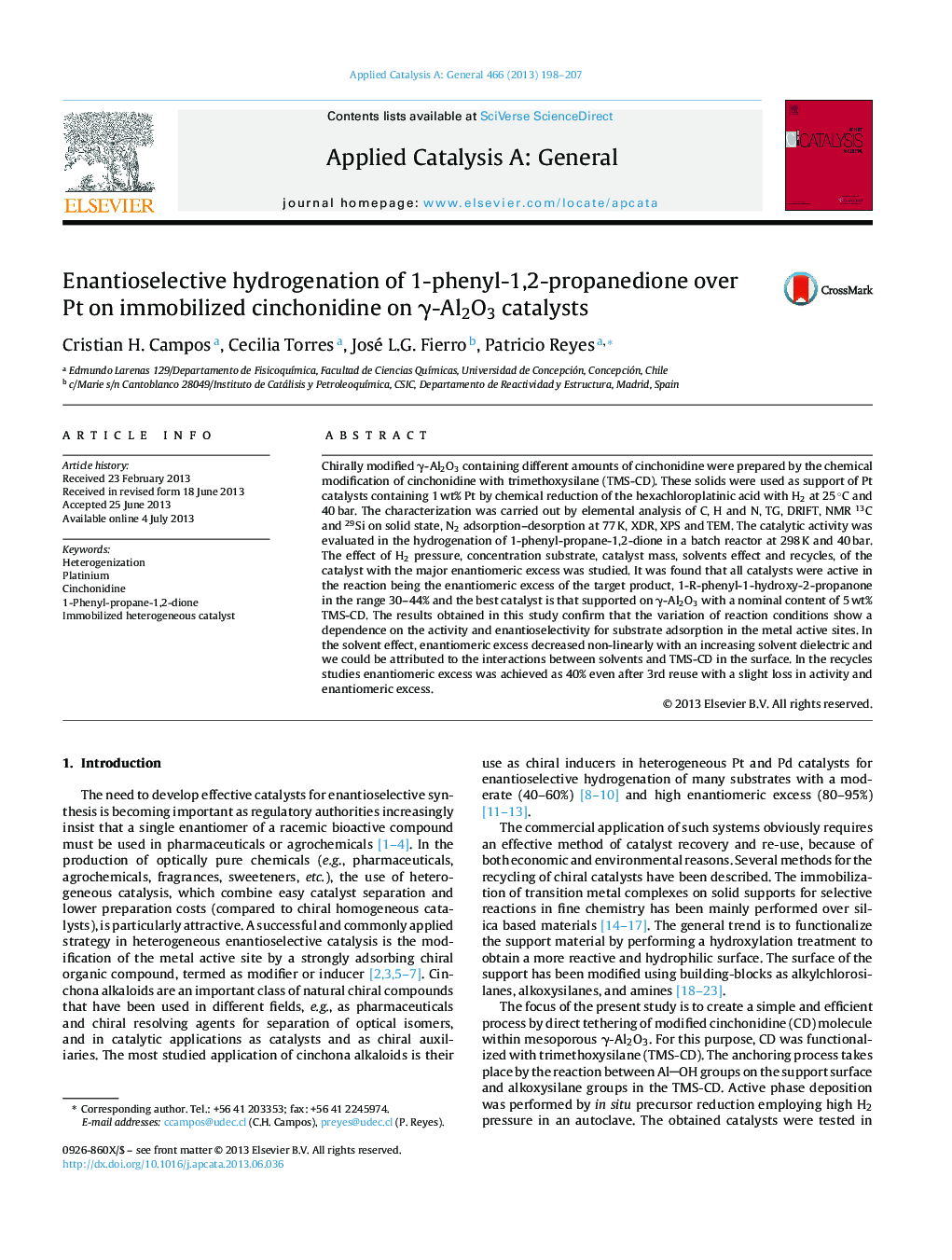| Article ID | Journal | Published Year | Pages | File Type |
|---|---|---|---|---|
| 40308 | Applied Catalysis A: General | 2013 | 10 Pages |
•Cinchonidine was anchored over γ-Al2O3 using trimethoxysilane as coupling agent.•Pt catalysts, with different wt% cinchonidine, were prepared using H2 high-pressure synthesis.•Catalyst systems were tested in enantioselective hydrogenation of 1-phenyl-1,2-propanodione.•The catalysts displayed dependence between wt% of cinchonidine, and activity-ee (%).•Consecutive cycles showed leaching and hydrogenation of cinchonidine on the surface.
Chirally modified γ-Al2O3 containing different amounts of cinchonidine were prepared by the chemical modification of cinchonidine with trimethoxysilane (TMS-CD). These solids were used as support of Pt catalysts containing 1 wt% Pt by chemical reduction of the hexachloroplatinic acid with H2 at 25 °C and 40 bar. The characterization was carried out by elemental analysis of C, H and N, TG, DRIFT, NMR 13C and 29Si on solid state, N2 adsorption–desorption at 77 K, XDR, XPS and TEM. The catalytic activity was evaluated in the hydrogenation of 1-phenyl-propane-1,2-dione in a batch reactor at 298 K and 40 bar. The effect of H2 pressure, concentration substrate, catalyst mass, solvents effect and recycles, of the catalyst with the major enantiomeric excess was studied. It was found that all catalysts were active in the reaction being the enantiomeric excess of the target product, 1-R-phenyl-1-hydroxy-2-propanone in the range 30–44% and the best catalyst is that supported on γ-Al2O3 with a nominal content of 5 wt% TMS-CD. The results obtained in this study confirm that the variation of reaction conditions show a dependence on the activity and enantioselectivity for substrate adsorption in the metal active sites. In the solvent effect, enantiomeric excess decreased non-linearly with an increasing solvent dielectric and we could be attributed to the interactions between solvents and TMS-CD in the surface. In the recycles studies enantiomeric excess was achieved as 40% even after 3rd reuse with a slight loss in activity and enantiomeric excess.
Graphical abstractFigure optionsDownload full-size imageDownload high-quality image (105 K)Download as PowerPoint slide
